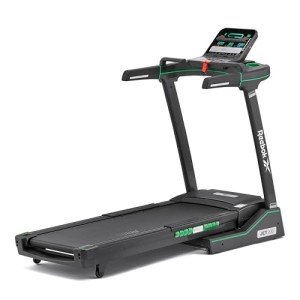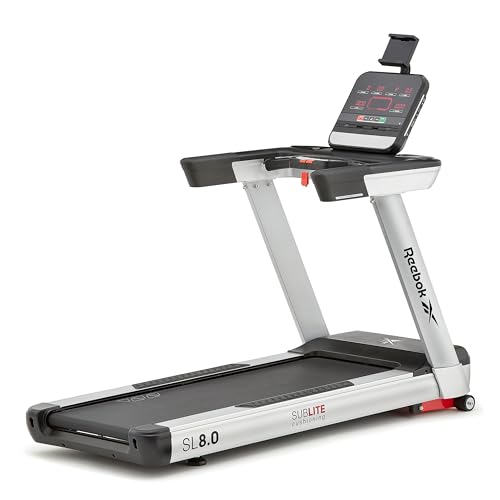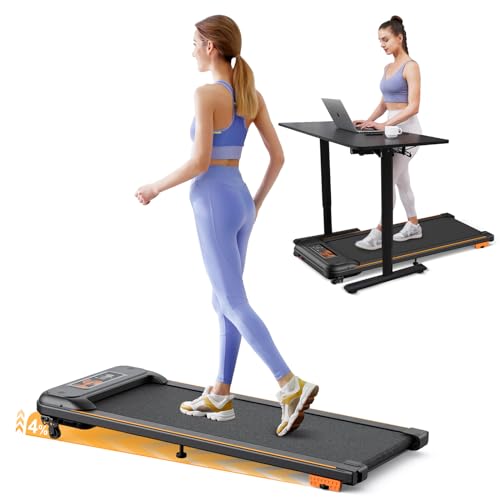In an age where sedentary lifestyles have become the norm, many individuals are turning towards innovative solutions that promote physical activity and health. One such solution gaining popularity is the walking pad, specifically the motorized under desk treadmill. These compact devices offer a practical and effective alternative for maintaining a healthy lifestyle without compromising space or convenience. This guide explores the various benefits of using walking pads, how they fit into modern living arrangements, and answers some frequently asked questions.
What is a Walking Pad?
A walking pad is a compact treadmill designed primarily for walking at a leisurely pace. Unlike traditional treadmills that often occupy significant floor space and require dedicated workout areas, walking pads are engineered to slide beneath desks or fit into tight spaces. They are often motorized, providing a consistent pace that allows users to multitask while exercising.
Key Features of Walking Pads
- Compact Design: Taking up little space, these pads can easily be stored under a desk or in a closet.
- Motorized Operation: Equipped with a powerful yet quiet motor that maintains a steady walking pace.
- Adjustable Speed Settings: Users can customize their walking speed based on preference and activity type.
- User-Friendly Controls: Many models come with remote controls or digital displays to track speed, distance, and calories burned.
- Safety Features: Includes emergency stop mechanisms and non-slip surfaces for added security.
The Advantages of Using a Motorized Under Desk Treadmill
- Increased Physical Activity: Incorporating regular walking into the daily routine can help combat the health risks associated with prolonged sitting.
- Improved Productivity: Studies have shown that light physical activity can boost energy levels, enhance concentration, and improve overall productivity.
- Space Saving: These devices are perfect for those living in compact spaces. They can easily slide under the desk when not in use.
- Affordable Fitness Option: Compared to traditional gym memberships or exercising at home with bulky equipment, walking pads offer a more affordable and convenient solution.
- Versatile Usage: Whether users want to walk while working, reading, or watching television, walking pads provide flexibility for exercise in everyday life.
How to Choose the Right Walking Pad
When considering the best walking pad for your needs, several factors should be taken into account:
- Size and Space: Measure the area where you plan to use the pad. Some models may be more compact than others.
- Weight Capacity: Ensure the pad can accommodate your weight. Most models have a weight limit ranging between 220 to 300 pounds.
- Speed Range: Determine the speed settings that suit your walking style. Most walking pads offer speeds ranging from 0.5 mph to 4 mph.
- Noise Level: Consider purchasing a model that operates at a low noise level, especially if you will be using it in an office environment.
- Price: Prices can vary significantly. Compare features and read reviews before making a decision.
Tips for Using a Walking Pad Effectively
- Start Slow: For beginners, it's essential to start at a comfortable speed and gradually increase as endurance builds.
- Maintain Good Posture: Keep your back straight, shoulders relaxed, and arms at your side or lightly resting on the desk to prevent strain.
- Incorporate Breaks: Alternate between sitting and walking to avoid fatigue and allow your body to adjust to the new routine.
- Stay Hydrated: Keep a water bottle nearby to maintain hydration, especially during extended walking sessions.
- Track Your Progress: Use fitness apps or traditional workout logs to monitor your progress and set achievable goals.
Common Misconceptions About Walking Pads
Misconception 1: Walking pads are only for fitness enthusiasts.
Reality: Walking pads cater to people of all fitness levels. They promote low-impact exercise that is suitable for everyone, from beginners to seasoned fitness fans.
Misconception 2: They are ineffective compared to traditional treadmills.
Reality: While walking pads may not offer the same features as high-end treadmills, they efficiently facilitate daily physical activity, which is key to a healthy lifestyle.
Misconception 3: Walking pads are too expensive.
Reality: There is a wide range of walking pads available at various price points, making them accessible for most budgets.
FAQs About Walking Pads
1. Can you run on a walking pad?
Running is not recommended on most walking pads, as they are designed primarily for walking. However, some models may accommodate light jogging with appropriate speed settings.
2. How much noise do walking pads make?
Most modern walking pads are designed to operate quietly. However, the noise level can vary depending on the model. It's best to check individual product specifications for noise levels.
3. Do I need to plug it in?
Yes, motorized walking pads require electrical power to operate. Ensure you have suitable outlets available in your workspace or area of use.
4. How do I maintain my walking pad?
Regular maintenance includes cleaning the belt and surface, and occasionally checking for any wear and tear. Always refer to the manufacturer’s guidelines for specific maintenance instructions.
5. Can I use a walking pad while working?
Absolutely! Walking pads are designed for multitasking. Many users find they can efficiently work or engage in other activities while enjoying the benefits of walking.
The motorized under desk treadmill, or walking pad, presents an exceptional opportunity for individuals seeking to enhance their fitness regimes while managing busy schedules and limited space. With their compact design and user-friendly features, walking pads are a practical solution that encourages an active lifestyle. By integrating walking into everyday life, users can experience the many physical and mental health benefits associated with regular movement. Whether working from home or in an office, walking pads prove to be an innovative and efficient way to keep the body moving, ultimately leading to a healthier future.





